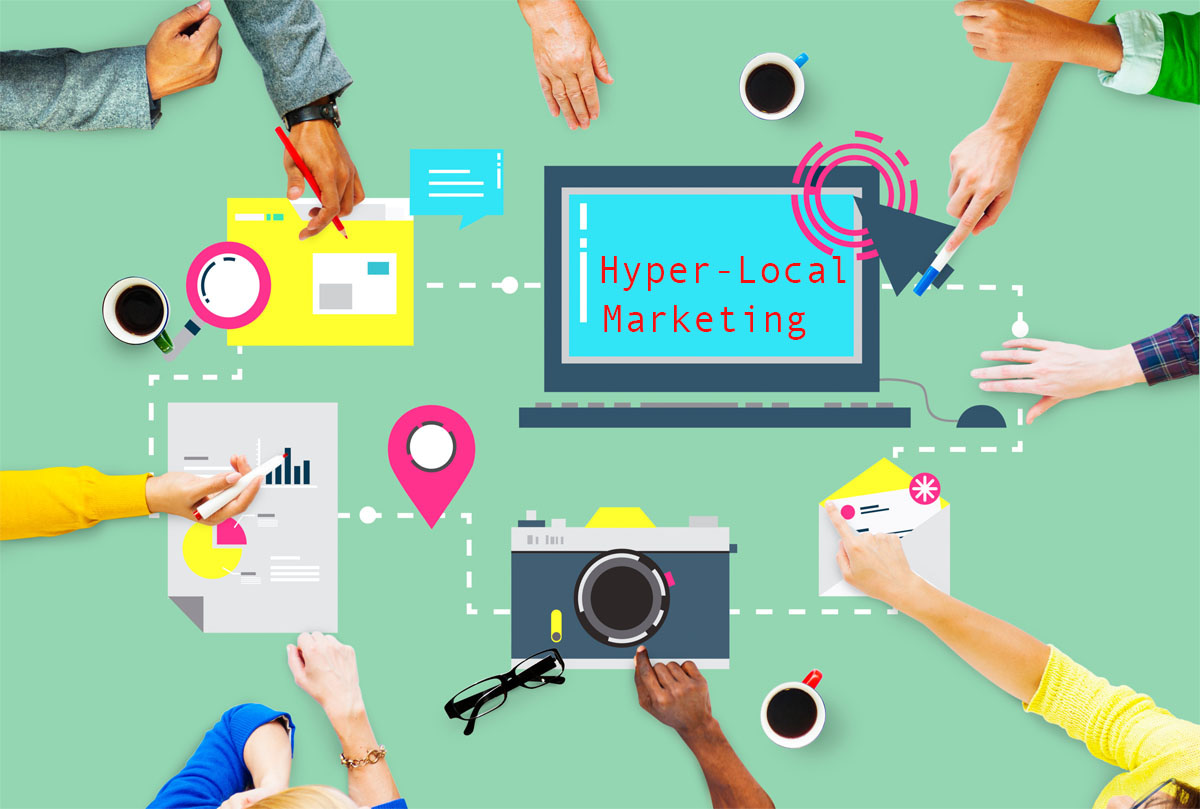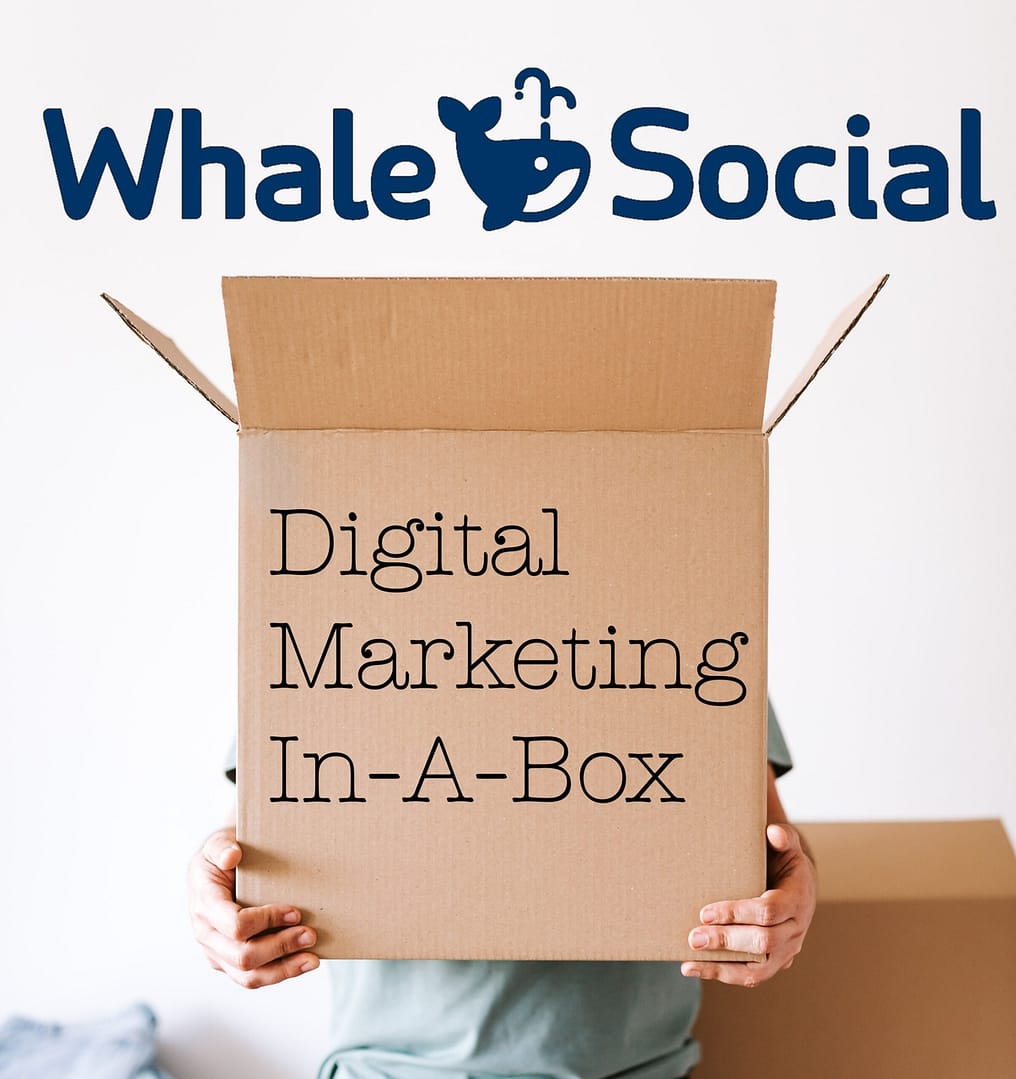By Max Milano (Tech Writer)
You’ve heard the saying: “All politics is local.” Well, all digital marketing is local, too. Brands that forget this are at risk of missing the boat big time.
Picture this: you’ve got a killer product or service, top-notch branding, and a smooth SEO-optimized website. But there’s just one teeny-tiny hitch – your marketing efforts are about as locally targeted as a blindfolded dart thrower.
The spray-and-pray approach may have worked in the past, but in this day and age of savvy customers and fierce competition, only brands that realize they can be a niche offering in a well-defined geographical area can position themselves to outcompete the bigger brands.
Hyper-localized digital marketing is the best way to reach your ideal customers. But what exactly is hyper-localized marketing?

Hyper-localized digital marketing is the best way to reach your ideal customers. But what exactly is hyper-localized marketing?
Hyper-localized digital marketing is all about zeroing in on specific neighborhoods, towns, or even street corners to connect with your brand’s ideal audience on a hyper-personal level. It’s all about speaking the language of your ideal customers – both figuratively and literally.
Whether you’re setting your sights on the bustling streets of New York City, the quaint villages of the English countryside, or the majestic landscapes of Canada, understanding each locale’s unique quirks and preferences is critical.
Gone are the days of flying blind with your digital marketing strategies. You need to find out exactly what makes your ideal customers tick. From their favorite digital hangouts to coffee brand preferences, no stone can be left unturned in your quest for hyper-localized digital marketing mastery.
Say hello to localized content creation– the secret sauce behind every successful hyper-localized marketing campaign.
We’re not just talking about slapping a few regional keywords into your email blasts and calling it a day. We’re talking about crafting content so tailored to your audience that it feels like it was made just for them. Because, well, it was!
When it comes to dominating hyper-local markets, local SEO is your new best friend. Think of it as the digital equivalent of planting your flag firmly in your ideal customers’ neighborhoods. With the proper optimization techniques, your brand will appear in local search results faster than you can say, “I’ll have what they’re having.”
Here’s a step-by-step guide on how to dominate hyper-local markets through local SEO, including keyword research and integration into your brand’s go-to-market strategy:
1. Conduct Hyper-Local Keyword Research:

· Start by brainstorming keywords and phrases relevant to your business and target audience. Include location-specific terms such as city names, neighborhoods, landmarks, and even colloquial terms used by locals.
· Use keyword research tools like Google Keyword Planner, SEMrush, or Ahrefs to identify hyper-local keywords with sufficient search volume and low competition. Focus on long-tail keywords that include location modifiers to target specific geographic areas.
· Analyze competitor websites and local search results to identify keywords driving traffic and engagement in your target market. Pay attention to the language and terminology your local audience uses in online searches.
2. Optimize Your Website for Local SEO:
· Incorporate hyper-local keywords strategically throughout your website, including page titles, meta descriptions, headings, and body content. Create location-specific landing pages or content hubs for different geographic areas within your target market.
· Optimize your Google My Business (GMB) listing with accurate business information, including your business name, address, phone number (NAP), website URL, and business hours. Encourage customers to leave reviews and respond promptly to any inquiries or feedback.
· Include location-specific schema markup on your website to help search engines understand the geographic relevance of your content and improve your chances of appearing in local search results.
3. Create Hyper-Local Content:
· Develop content that speaks directly to your hyper-local audience’s interests, needs, and preferences. This could include blog posts, articles, case studies, or videos highlighting local events, attractions, and businesses.
· Incorporate hyper-local keywords naturally into your content while providing valuable information or insights that resonate with your target audience. Consider featuring local testimonials, success stories, or interviews with community members to enhance authenticity and relevance.
4. Build Local Citations and Backlinks:
· List your business on local directories, review sites, and industry-specific platforms to build citations and backlinks from authoritative sources. Ensure your NAP information is consistent across all online listings to avoid confusion and improve your local search visibility.
· Seek out opportunities for local partnerships, sponsorships, or collaborations with other businesses, organizations, or influencers in your community. Participating in local events, charity initiatives, or community outreach programs can help raise awareness of your brand and attract valuable backlinks from local websites.
5. Monitor and Measure Results:
· Use tools like Google Analytics, Google Search Console, and local SEO tracking software to monitor the performance of your hyper-local SEO efforts. Track key metrics such as website traffic, rankings, click-through rates (CTR), and conversion rates from local search results.
· Regularly review your local SEO performance and adjust your strategies based on insights gained from analytics. Experiment with keywords, content types, and optimization techniques to continually improve your visibility and engagement in hyper-local markets.
By following these steps and integrating hyper-local keyword research into your brand’s go-to-market strategy, you will effectively dominate hyper-local markets through local SEO and increase your visibility and relevance to your local customers.
Now, onto the fun stuff – geotargeted advertising. We’re talking about hyper-targeted ads that are so on point that they practically read your customer’s mind.
Geotargeted advertising delivers ads to individuals based on their geographical location. This allows advertisers to tailor their messages to specific regions, cities, or even neighborhoods, making the ads more relevant and personalized to the recipients. Here are some practical examples:
1. Local Businesses:
A local coffee shop in New York City may use geotargeted advertising to reach potential customers within a few blocks of their location. They could run mobile ads that appear on the smartphones of people nearby, enticing them with a special offer for a coffee or pastry.
2. Event Promotion: An event organizer hosting a music festival in Los Angeles could utilize geotargeted ads to target users in the LA area. These ads might highlight the lineup, ticket prices, and nearby accommodations to attract local attendees.
3. Retail Chains: A national retail chain like Target or Walmart might use geotargeting to promote store-specific deals. For instance, they could send out ads to people living near a particular store location, showcasing discounts on products available at that store.
4. Real Estate: A real estate agency could employ geotargeted ads to reach individuals looking to buy or rent property in specific neighborhoods. They might showcase listings, open houses, or market insights tailored to the preferences and demographics of people in those areas.
5. Google Ads: Google Ads allows advertisers to target users based on location. For example, a local pizza restaurant in Chicago could use Google Ads to show sponsored search results to users searching for “pizza delivery” or related keywords within the Chicago area.
6. Meta (Facebook) Ads: Meta (formerly Facebook) offers geotargeting options for advertisers on its platform. A clothing brand launching a new store in San Francisco might use Meta ads to target users who live in or frequently visit the city, showcasing the store’s grand opening event and exclusive promotions.
By leveraging location data, brands can effectively “read their customers’ minds” and deliver ads that align with their immediate needs and interests.
Need help setting up hyper-localized and geotargeted Google and Facebook ads for your brand? Contact WhaleSocial.
Influencers Are Local Too: Start Making a List of Local Influencers and Partnerships That Are Compatible With Your Brand
Who better to sing your brand’s praises than the cool kids on the local block? By reaching out to the influencers your ideal customers follow, you’ll tap into a whole new world of brand advocacy and word-of-mouth marketing.
Here are some practical steps you can take to leverage local influencers and partnerships to promote your brand:
1. Identify Local Influencers: Start by researching and compiling a list of local influencers in your area. Look for individuals with a significant following on social media platforms like Instagram, Twitter, or YouTube whose content aligns with your brand’s values and target audience.
2. Engage with Local Influencers: Once you’ve identified potential influencers, engage with them on social media by following, liking, and commenting on their posts. This helps to build rapport and familiarity with them before reaching out for collaboration.
3. Reach Out for Local Partnerships: Send personalized messages or emails to the influencers expressing your interest in collaborating with them. Be clear about what you’re offering (e.g., free products, sponsored posts, event invitations) and how working together can benefit both parties. Highlight how their influence can positively impact your brand and vice versa.
4. Offer Exclusive Deals or Experiences: Consider offering influencers exclusive deals or experiences they can share with followers. This could include invitations to VIP events, sneak peeks of new products, or discounts for their followers. Providing value to influencers incentivizes them to promote your brand authentically.
5. Collaborate on Content Creation: Work closely with influencers to co-create engaging content that showcases your brand authentically. This could involve sponsored posts, product reviews, behind-the-scenes footage, or user-generated content campaigns. Encourage influencers to inject their personality and creativity into the content to make it more compelling.
6. Tap into Local Events and Organizations: Explore opportunities to partner with local events, festivals, or community organizations relevant to your brand. Sponsorship, co-hosting events, or participating in community initiatives can help raise brand awareness and foster positive associations with your brand among local consumers.
7. Track and Measure Results: Monitor the performance of your influencer partnerships and track key metrics such as engagement, reach, and conversion rates. Use analytics tools provided by social media platforms or third-party services to assess the effectiveness of your campaigns and optimize future collaborations.
By building relationships with local influencers and partnering with community organizations, you can tap into a robust network of brand advocates who can help amplify your message and connect with your target audience on a more personal level.
And finally, let’s talk about how to measure your success.
Let’s face it, what’s the point of all this hyper-localized digital marketing if we can’t track our results? From website traffic to lead generation to cold, hard sales, you have got to keep your eyes on the prize. And if something’s not working, no sweat – tweak, test, and try again until you’re regularly hitting the digital marketing jackpot.
Here’s a practical guide on how to track and optimize hyper-localized digital marketing efforts using tools like Google Analytics, HubSpot, and other relevant third-party software:
1. Set Clear Goals and KPIs: Establish clear objectives for your hyper-localized digital marketing campaigns before diving into tracking. These could include increasing website traffic, generating leads from specific geographic areas, or driving sales within a targeted location. Define key performance indicators (KPIs) that align with your goals, such as website visitors, conversion rates, or revenue generated.
2. Install Google Analytics: Set up Google Analytics on your website to track various metrics related to website traffic, user behavior, and conversions. Use the “Audience” reports to analyze the geographic location of your website visitors and identify areas where your hyper-localized marketing efforts are driving the most traffic.
3. Utilize UTM Parameters: Implement UTM parameters in your campaign URLs to track the effectiveness of different hyper-localized marketing channels and campaigns. This lets you see which sources, mediums, and campaigns drive traffic and conversions in Google Analytics. Tools like Google’s Campaign URL Builder can help you generate UTM-tagged URLs.
4. Integrate HubSpot or a CRM: Integrate HubSpot or another CRM platform with your website and marketing channels to track leads and sales generated from hyper-localized campaigns. Set up custom fields to capture geographic information about leads and customers, allowing you to analyze the effectiveness of your localized marketing efforts in driving conversions.
5. Monitor Social Media Insights: If you’re running hyper-localized campaigns on social media platforms like Facebook, Instagram, or Twitter, use their built-in analytics tools to track engagement, reach, and audience demographics. Monitor metrics such as post engagement, impressions, and audience location to gauge the effectiveness of your localized content.
6. Use Heatmaps and Session Recording Tools: Employ third-party tools like Hotjar or Crazy Egg to visualize user behavior on your website through heatmaps and session recordings. These tools provide insights into how users interact with your site, including which areas of the page they focus on and where they encounter friction. Use this data to optimize the user experience for visitors from specific geographic regions.
7. A/B Testing and Optimization: Continuously test and optimize your hyper-localized marketing campaigns based on the data collected from analytics tools. Experiment with different messaging, offers, and targeting strategies to identify what resonates best with your local audience. Use A/B testing tools within platforms like Google Ads or Facebook Ads to compare the performance of different ad variations.
8. Regular Performance Reviews and Adjustments: Schedule regular reviews of your hyper-localized marketing performance to evaluate progress against your goals and KPIs. Identify areas for improvement and make data-driven adjustments to your campaigns accordingly. Iterate your strategies based on insights gained from analytics to continually optimize your digital marketing efforts and maximize results.
By implementing these steps and leveraging tools like Google Analytics, HubSpot, and other third-party software, you can effectively track, analyze, and optimize your hyper-localized digital marketing campaigns to drive tangible business results.
Need help setting up your Google Analytics/Hubspot conversion tracking? Contact WhaleSocial.
WhaleSocial Digital Marketing Agency is your partner in navigating the intricate world of Digital Marketing. Our expertise and tailored strategies ensure your business gets the visibility and engagement it deserves.





